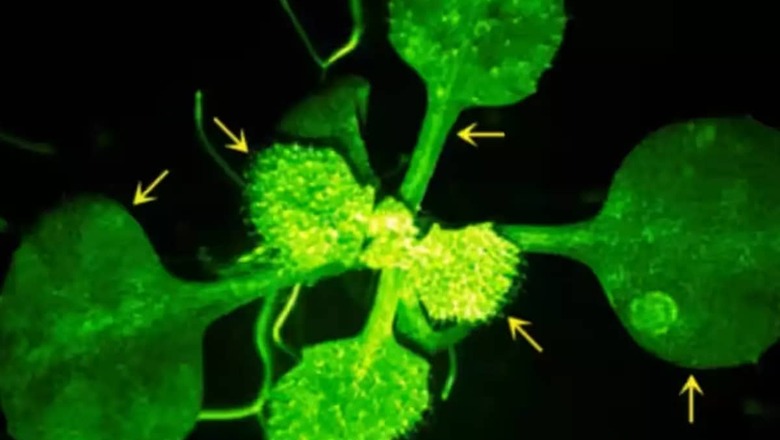
views
Not only humans but animals and plants co-inhabiting with us communicate between themselves. Humans can express their emotions, thoughts, and feelings through words. However, the plant and animal kingdoms communicate through signals to pass a message. Although it is impossible to believe that plants engage in nonverbal communication, the latest discovery has put a full stop to the disbelief. A group of molecular scientists at Saitama University in Japan has not only found out that plants talk among themselves when they sense danger, but also recorded the amazing phenomenon on camera for proof. The discovery was published in Nature Communications.
Led by Takuya Uemura and Yuri Aratani, the biologists discovered that when plants detect danger their behaviour changes and they respond differently. The researchers executed an experiment where they put caterpillars on the leaves of tomato plants and a common weed species known as Arabidopsis thaliana. The compounds were pumped onto the recipient plant at a steady pace after being concentrated in a plastic container to better analyse their effects on the neighboring plant.
The recipient Arabidopsis plant was genetically altered to have biosensors in its cells that fluoresce green in response to the presence of calcium ions. In a mind-bending discovery, it was seen that the unharmed plants in the video displayed calcium signaling across their extended leaves as they responded to the messages from their damaged neighbors. By examining molecules in the air, the researchers were able to determine that substances Z-3-HAL and E-2-HAL caused calcium signals in Arabidopsis.
The scientists discovered that the guard cells (producing stomata), mesophyll cells (inner leaf tissue), and epidermal cells (outermost layer) were the first to react to danger cues in Arabidopsis plants that had been genetically modified to contain fluorescence sensors in particular cells. Guard cells and mesophyll cells were the first to produce calcium signals in response to Z-3-HAL. Stomata serve as the plants’ “nostrils" since pre-treating plants with a phytohormone that closes stomata dramatically decreases calcium signaling.
Masatsugu Toyota, a molecular biologist at Saitama University expressed the joy of unveiling the “intricate story of when, where, and how plants respond to airborne ‘warning messages’ from their threatened neighbours". According to the researcher, this “ethereal communication" hidden from the human eye plays a significant part in “safeguarding neighbouring plants" from any threat or danger quite promptly.


















Comments
0 comment